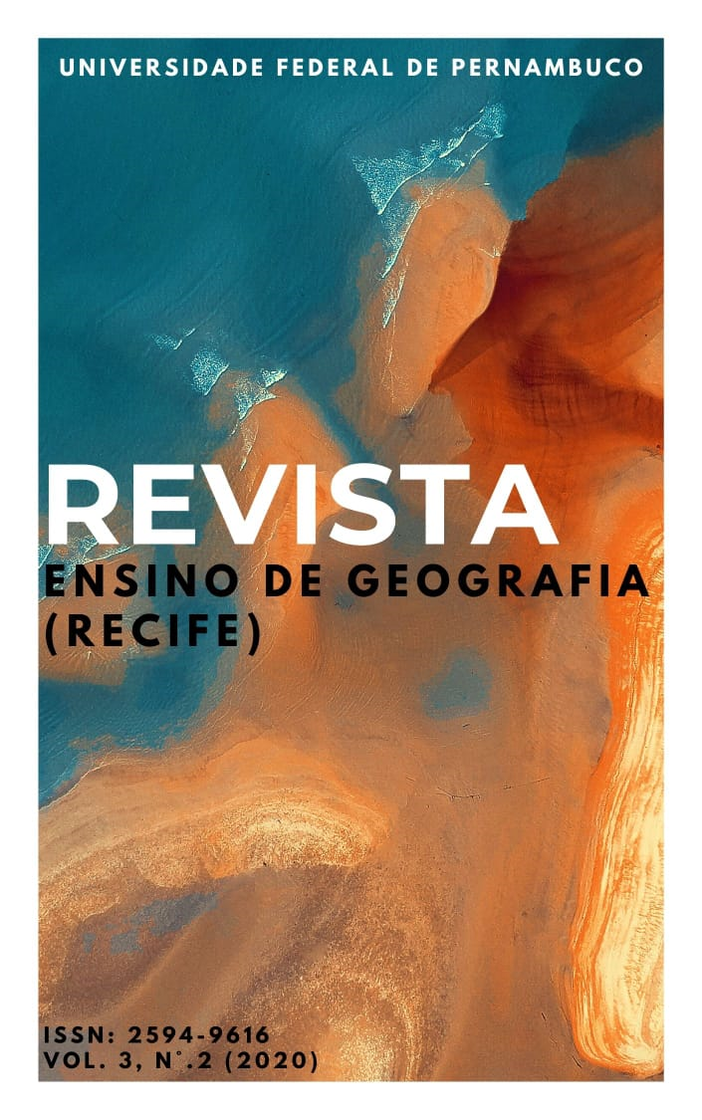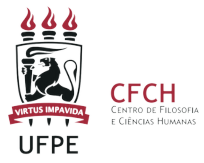Environmental education at schoool: geography as an interdisciplinary practice tool
DOI:
https://doi.org/10.51359/2594-9616.2020.246196Keywords:
Education, Environmental Education, Geography Teaching, School, InterdisciplinarityAbstract
This paper aims to present discussions referred to the environmental education importance at elementary schools, seeking to understand the legal parameters in which environmental education is supported, the importance of interdisciplinary practice and the relationship between environmental education and Geography teaching. To demonstrate how the environmental theme can be worked with Geography, practical workshops developed with students from the Dom Érico Ferrari State Elementary School, located in Nova Palma/RS, are presented. The research was made from a qualitative approach and the instruments utilized to obtain the data are bibliographic, documentary and field research. Environmental education is evidenced in laws, programs and education norms, and in educational institutions, it should be present in an articulated manner at all levels and modalities of the educational process. It was verified that the environmental education is consolidated at schools as a practice through articulated work, made with different areas of knowledge, taking as reference the reality and the relationships established at a local level and its interface with global dynamics.
References
BOTÊLHO, L, A, V; et al. A educação ambiental e a geografia escolar: dimensões curriculares, possibilidades e desafios contemporâneos. Revista Caminhos de Geografia. v. 17, n. 59. Setembro/2016. Uberlândia, MG. Disponível em: http://www.seer.ufu.br/index.php/caminhosdegeografia/article/view/31858 Acesso em abril de 2020.
BRAGA, R. de O. B. Algumas práticas no ensino de geografia. X Congresso Nacional de Educação. Pontifícia Universidade Católica do Paraná. Curitiba, PR. 2011. pag. 12944-12.951. Disponível em: http://www.seer.ufu.br/index.php/caminhosdegeografia/article/view/31858 Acesso em abril de 2020.
BRASIL. Constituição da República Federativa do Brasil, 1988. Brasília: Senado Federal. Disponível em: http://portal.mec.gov.br/seb/arquivos/pdf/meioambiente.pdf. Acesso em: 28 fev. de 2020.
BRASIL. Diretrizes Curriculares Nacionais para a Educação Ambiental. Brasília, 2012. Disponível em: http://portal.mec.gov.br/index.php?option=com_docman&view=download&alias=10955-pcp014-12&Itemid=30192. Acesso em: 11 de fev. de 2020.
BRASIL. Lei nº 9.394, de 20 de dezembro de 1996. Lei de Diretrizes e Bases da Educação Nacional. Diário Oficial da União, Brasília, DF. Disponível em: http://portal.mec.gov.br/seb/arquivos/pdf/meioambiente.pdf. Acesso em: 18 fev. de 2020.
BRASIL. Parâmetros Curriculares Nacionais: meio ambiente. Brasília/DF, 1997. Disponível em: http://portal.mec.gov.br/seb/arquivos/pdf/meioambiente.pdf. Acesso em: 08 mar. de 2020.
BRASIL. Lei nº 9.795, de 27 de abril de 1999. Política Nacional de Educação Ambiental. Diário Oficial da União, Brasília, DF. Disponível em: http://www.planalto.gov.br/ccivil_03/LEIS/L9795.htm. Acesso em: 20 jan. de 2020.
CALLAI, H. C. O município: uma abordagem geográfica nos primeiros anos da
formação básica. In: CAVALCANTI, L. de S.. Temas da Geografia na escola básica.
Campinas, SP: Papirus, 2013.
CAMPO E LAVOURA. Laudo mostra que agrotóxicos causaram morte de milhões de abelhas no RS. 2019. Disponível em https://gauchazh.clicrbs.com.br/economia/campo-e-lavoura/noticia/2019/07/laudo-mostra-que-agrotoxicos-causaram-morte-de-milhoes-de-abelhas-no-rs-cjyhei8yp008701k0q6pdxkpm.html Acesso em: 15 fev. 2020
CAVALCANTI, L. de S. Concepções teórico-metodológicas da Geografia escolar no mundo contemporâneo e abordagens no ensino. In: SANTOS. L. C. P. etall. (orgs). Convergências e tensões no campo da formação e do trabalho docente. Belo Horizonte: Autentica, 2010.
CARVALHO, I. C. M. Questão ambiental e a emergência de um campo de ação políticopedagógico. In: LOUREIRO, C. F. B.; LAYRARGUES, P. P.; CASTRO, R. S. (Org.).
Sociedade e meio ambiente. São Paulo: Cortez, 2000. p. 53-65.
FERRAZ, C, B, O. A geografia da educação na sociedade do conhecimento: sombras do desconhecimento. Ensino de Geografia: Novos olhares e práticas. Editora UFGD, Universidade Federal de Grande Dourados. Dourados, MS. 2011. Disponível: http://209.177.156.169/libreria_cm/archivos/pdf_56.pdf Acesso em abril de 2020.
FERREIRA, A. A; et al. A importância da prática de ensino em geografia. IV Encontro Estadual de didática e práticas de ensino. Centro de Estudos e Pesquisas em Didática (CEPED). ANAIS. Goiânia, GO. 2011. Disponível: http://cepedgoias.com.br/edipe/ivedipe/pdfs/geografia/co/114-187-1-SM.pdf. Acesso em abril de 2020.
FREIRE, P. Pedagogia da autonomia: saberes necessários à prática educativa. 22. ed. São Paulo: Paz e Terra, 2002.
GUIMARÃES, M. A Formação de educadores ambientais em tempo de crise. In: XI Congresso Nacional de Educação-Educere. Curitiba, p. 30371 - 30372, 2013. Disponível em: https://educere.bruc.com.br/arquivo/pdf2013/15621_7212.pdf Acesso em: 17 de jan. de 2020.
MORAIS, E. M. B. de. As temáticas físico-naturais no ensino de geografia. In: CAVALCANTI, Lana de Souza. Temas da Geografia na escola básica. Campinas, SP: Papirus, 2013.
NETO LANDIM, F, O; BARBOSA, M, E, S. O ensino de geografia na educação básica: uma análise da relação entre a formação do docente e sua atuação na Geografia escolar. Revista Geosaberes – v. 1, n. 2, Dezembro/2010. Universidade Federal do Ceará. Disponível em: http://cepedgoias.com.br/edipe/ivedipe/pdfs/geografia/co/114-187-1-SM.pdf Acesso em: 03 abr. de 2020.
PONTUSCHKA, N. N.; PAGANELLI, T. I.; CACETE, N. H. Para ensinar e aprender Geografia. 3 ed. São Paulo: Cortez, 2009.
PPP, Projeto Político Pedagógico. Escola Estadual de Ensino Fundamental Dom Érico Ferrari. Nova Palma: PPP, 2017.
STEFANELLO, C. F. R; DELLA MÉA, J. A. C. Projeto “O mel e suas utilidades”. Escola Estadual de Ensino Fundamental Dom Érico Ferrari. Nova Palma, RS. Inédito. 2019.
TOZONI-REIS, M. F. C. Metodologias aplicadas à educação ambiental. Curitiba: IESD
Brasil, 2008.
TURRA, A. Projeto “Horta na escola”. Escola Estadual de Ensino Fundamental Dom Érico Ferrari. Nova Palma, RS. Inédito. 2019.
Downloads
Published
How to Cite
Issue
Section
License
Copyright (c) 2021 Helena Maria Beling, Janete Webler Cancelier, Michele Hennig Vestena, josiane Oliveira De Campos

This work is licensed under a Creative Commons Attribution 4.0 International License.
Authors who publish with this journal agree to the following terms:- Authors retain copyright and grant the REVISTA ENSINO DE GEOGRAFIA (RECIFE) right of first publication with the work simultaneously licensed under a Creative Commons Attribution NonCommercial International 4.0 (CC BY-NC) that allows others to share the work with an acknowledgement of the work's authorship and initial publication in this journal.
- Authors are able to enter into separate, additional contractual arrangements for the non-exclusive distribution of the journal's published version of the work (e.g., post it to an institutional repository or publish it in a book), with an acknowledgement of its initial publication in this journal.
- Authors are permitted and encouraged to post their work online (e.g., in institutional repositories or on their website) prior to and during the submission process, as it can lead to productive exchanges, as well as earlier and greater citation of published work.



